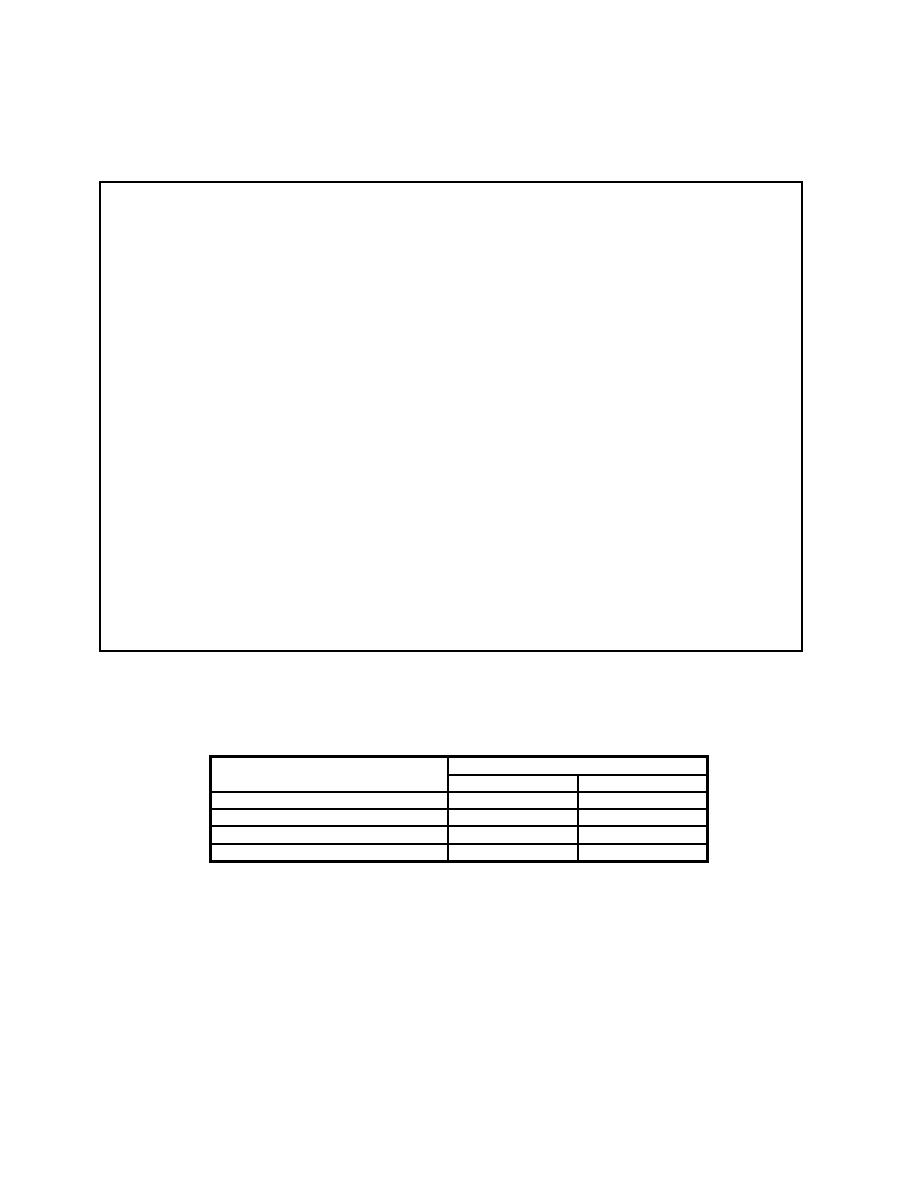

Custom Search
|
|

|
||
 MIL-HDBK-1013/12
<1> For Each Type of Vehicle Bomb: For each type of vehicle bomb (moving and
stationary) that a neighboring asset has a design basis threat for, do <2>
through <7>. When done, return to igure D-20
F
.
<2> Get Explosive Arc Radius 1 for High Level of Protection. se Table D-33 to
U
determine the explosive arc radius of a vehicle bomb for high level of
protection. Select the row that contains the appropriate design basis threat
for the neighboring asset and obtain the explosive arc radius from the "H"
column. Enter the explosive arc radius in column (d) or (h) of the Collateral
Damage worksheet (see AppendixB for all worksheets) for a moving vehicle bomb
or stationary vehicle bomb, respectively. Proceed to <3>.
<3> Get Explosive Arc Radius 2 for High Level of Protection. se Table D-33 to
U
determine the explosive arc radius of a vehicle bomb for low level of
protection. Select the row that contains the appropriate design basis threat
for the neighboring asset and obtain the explosive arc radius from the "L"
column. Enter the explosive arc radius in column (e) or (i) of the Collateral
Damage worksheet for a moving vehicle bomb or stationary vehicle bomb,
respectively. Proceed to <4>.
<4> Is Asset Within Explosive Arc Radius 1? If an explosive arc radius in column
(d) or (h) (for moving vehicle bomb or stationary vehicle bomb, respectively)
is greater than the distance between facilities in column (b), proceed to <5>.
Otherwise, proceed to <6>.
<5> Enter High for Level of Protection. Enter an "H" in column (f) or (j) (for
moving vehicle bomb or stationary vehicle bomb, respectively) of the
Collateral Damage worksheet. Proceed to <1> for next type of vehicle bomb.
<6> Is Asset Within Explosive Arc Radius 2? If an explosive arc radius in column
(e) or (i) (for moving vehicle bomb or stationary vehicle bomb, respectively)
is greater than the distance between facilities in column (b), proceed to <7>.
Otherwise, proceed to <1> for next type of vehicle bomb.
<7> Enter Low for Level of Protection. Enter an "L" in column (f) or (j) (for
moving vehicle bomb or stationary vehicle bomb, respectively) of the
Collateral Damage worksheet. Proceed to <1> for next type of vehicle bomb.
Figure D-24
Description:
Collateral Damage Threat Severity Level
Table D-33
Explosive Arc Radii for Collateral Damage (ft) Levels of Protection
Neighboring Asset
Level of Protection
Threat Severity Level
L
H
VH
1500 (450 m) 1000 (300
m)
H
1200 (370 m)
700 (210
m)
M
800 (240 m)
500 (150
m)
L
500 (150 m)
200 (60
m)
224
|
 |
|
 |
||